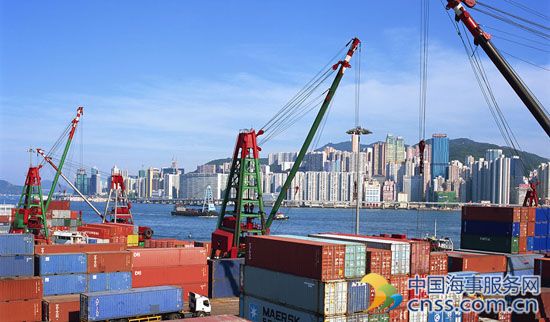LCQ20: Control on the import, export and handling of hazardous waste

Following is a question by the Hon Hui Chi-fung and a written reply by the Secretary for the Environment, Mr Wong Kam-sing, in the Legislative Council this week:
Question:
It was reported in the press in November last year that 123 containers on a container vessel, which originated from Romania and were suspected to be carrying slag with heavy metals of cadmium and arsenic, had been refused entry by the port authorities of Shanghai, Xiamen and Malaysia one after another. Subsequently, these containers had been shipped to Hong Kong waters, and had since remained here. Some environmentalists have pointed out that in the event that the slag in those containers is disposed of at local landfills, it will lead to ecological disasters which are too ghastly to contemplate. Regarding the control on the import, export and handling of hazardous waste, will the Government inform this Council:
(1) whether it has assessed the threats or harm posed by the slag in the aforesaid containers to public health and the ecological environment; if it has assessed, of the outcome;
(2) whether it knows if those containers are still in the territory of Hong Kong; if they are, whether they have been taken ashore, and the circumstances under which the slag in these containers will be allowed to be disposed of at local landfills;
(3) whether it has taken mandatory measures and other measures to prevent the slag in those containers from being taken ashore for disposal in the territory of Hong Kong; and
(4) of the number of prosecution cases, instituted by the Environmental Protection Department in the past three years, of unauthorised import or export of hazardous waste in violation of the Waste Disposal Ordinance (Cap. 354), together with a breakdown by type of waste; the respective numbers of containers in such cases which at present (i) have been shipped out of the territory and (ii) remain in the territory of Hong Kong (with a breakdown by means of handling); the number of cases of repeated offences among such cases?
Reply
President,
(1), (2) and (3) Upon receipt of the reports in late September, the Environmental Protection Department (EPD) has been closely following up on the movement of the containers shipment. The EPD conducted sampling and laboratory testing of the materials carried in this consignment of 123 containers. Laboratory findings indicate that the materials are raw mineral ores of copper, as reported in the cargo declaration, and they are not hazardous waste. According to the Government Laboratory’s reports, the raw mineral ores contain mainly iron, copper, zinc and lead, with the levels of other trace elements within the normal range expected of raw mineral ore materials. The entire consignment of containers is currently kept within the container yard of the Kwai Chung Container Terminals (KCCT). The shipping company and the containers shipment owner are arranging for their shipment out of Hong Kong.
Although the materials are not hazardous waste, to prevent such imported materials from being stranded in Hong Kong for disposal at our local landfills, the EPD will continue to supervise the shipping company and the containers shipment owner to ship the entire batch of containers out of Hong Kong as soon as possible, and to closely monitor the shipment arrangements until all the 123 containers have left Hong Kong.
These containers must not be removed from the KCCT during the interim period.
(4) The EPD attaches great importance to combating illegal trans-boundary movements of hazardous waste. Based on risk assessments and intelligence received, the EPD collaborates with relevant departments to conduct random inspections of imports/exports that are suspected of containing hazardous waste, in order to intercept illegal import of hazardous waste. Over the past three years (2014-2016), the EPD completed prosecutions of 68 cases of illegal import/export of hazardous waste, of which nine cases involved repeated offences. All illegal import containers involved in these cases had been returned to their places of origin, and each of these cases was reported to the relevant overseas enforcement agencies. A breakdown of the cases is as follows:
HEADLINES
- Do shipping markets want Biden or Trump for the win?
- All 18 crew safe after fire on Japanese-owned tanker off Singapore
- Singapore launching $44m co-investment initiative for maritime tech start-ups
- Cosco debuts Global Shipping Industry Chain Cooperation Initiative
- US warns of more shipping sanctions
- China continues seaport consolidation as Dalian offer goes unconditional